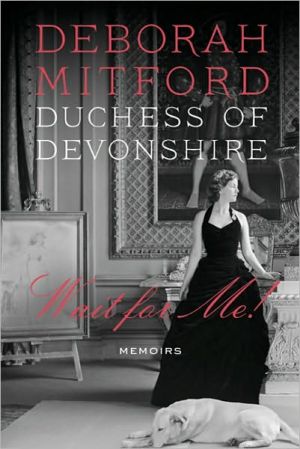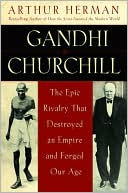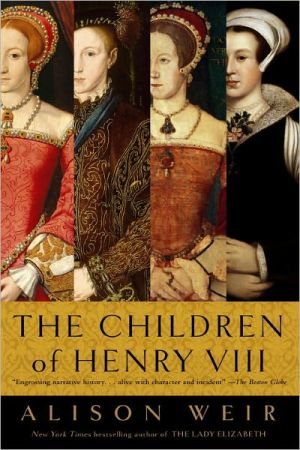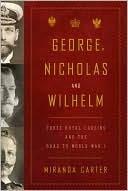Elizabeth I
Glitteringly detailed and engagingly written, the magisterial Elizabeth I brings to vivid life the golden age of sixteenth-century England and the uniquely fascinating monarch who presided over it. A woman of intellect and presence, Elizabeth was the object of extravagant adoration by her contemporaries. She firmly believed in the divine providence of her sovereignty and exercised supreme authority over the intrigue-laden Tudor court and Elizabethan England at large. Brilliant, mercurial,...
Search in google:
Glitteringly detailed and engagingly written, the magisterial Elizabeth I brings to vivid life the golden age of sixteenth-century England and the uniquely fascinating monarch who presided over it. A woman of intellect and presence, Elizabeth was the object of extravagant adoration by her contemporaries. She firmly believed in the divine providence of her sovereignty and exercised supreme authority over the intrigue-laden Tudor court and Elizabethan England at large. Brilliant, mercurial, seductive, and maddening, an inspiration to artists and adventurers and the subject of vicious speculation over her choice not to marry, Elizabeth became the most powerful ruler of her time. Anne Somerset has immortalized her in this splendidly illuminating account. Publishers Weekly In this totally captivating, sympathetic biography, English writer Somerset quotes an abundance of primary sources to elucidate Queen Elizabeth I's often criticized actions. For example, she investigates the cunning ruler's ``sound enough reasons'' for attempting to have her hated royal cousin, Mary, Queen of Scots, murdered in an underhand fashion without the bother of an execution. Somerset ( Ladies-in-Waiting) argues that the execution of Elizabeth's mother, Anne Boleyn, when she was two and a half cast a dark shadow over the queen's entire life. A virgin monarch, thrilled by the power of her father, Henry VIII, Elizabeth (1533-1603) turned her sex to her advantage in a man's world. She ``flaunted her femininity'' with chivalrous male colleagues and used her marital availability as a chief asset in the conduct of foreign affairs. The success of her 45-year reign, writes Somerset, was very much a personal triumph aided by her magnetism and charm. A wry, convincing portrait of a complex character. Illustrated. BOMC alternate. (Nov.)
CHAPTER 1\ "As toward a child . . . as ever I knew any"\ On 9 April 1533, a foreign diplomat named Eustace Chapuys arrived at Greenwich Palace to make a formal protest to Henry VIII about the King's behaviour towards Catherine of Aragon, his Spanish wife of twenty-four years' standing. Since 1527, Henry had been seeking to have his marriage to Catherine dissolved, but his wishes had been frustrated by Pope Clement VII's steadfast refusal to grant him a divorce. The Pope's obstinacy on this point was partly the result of pressure from Catherine's nephew, the Holy Roman Emperor Charles V, whose sense of family honour was too strong for him willingly to permit his aunt to be cast aside by Henry. In 1529 Charles had sent Chapuys to England as his ambassador, with instructions to uphold Catherine's interests at all times and to do all that was possible to prevent Henry VIII from discarding her.\ For the past four years, Chapuys had carried out this task with commendable resource and tenacity, but this was not a matter on which Henry was prepared to concede defeat. Recently there had been clear indications that the King had found a way of breaking the deadlock that had confronted him in his matrimonial affairs, for on 25 January 1533 Henry had secretly married the woman he now loved, a former maid of honour of Queen Catherine's named Anne Boleyn. As yet Henry had not dared openly to acknowledge this marriage, but in March his legal position had been strengthened by the passage through Parliament of the Act in Restraint of Appeals, which had opened up the way for an authoritative pronouncement within England on the divorce by prohibiting appeals beyond her frontiers to Rome. As Henry's dependence on a favourable ruling at Rome had diminished, so his confidence had increased, and only the day before his meeting with Chapuys he had sent word to Catherine of Aragon "that she need not trouble herself about returning to him, for he had already taken another wife". It was in the light of these developments that Chapuys, as Charles V's representative, had felt it necessary to seek an audience at which he could remonstrate with Henry about Catherine's treatment.\ Wasting no time on diplomatic preliminaries, Chapuys reproached Henry for his abuse of Catherine's rights and sternly reminded him that he would have to answer to God for his actions. The King did not flinch. "God and his conscience were perfectly agreed on that point", he told Chapuys, and he added blandly that he wished to secure the succession of his kingdom by having children, "which he had not at present". Chapuys courteously reminded him that, on the contrary, he and Catherine had had a daughter, the Princess Mary, born in 1516, and the ambassador next observed that "it seemed as if nature had decided that the succession to the English throne should be through the female line". Henry was not impressed by a suggestion so patently absurd, and he brushed it aside with the brusque observation "that he knew better than that". True, Salic law (which debarred women from inheriting the crown) did not prevail in England, but there had been no Queen regnant since the brief and troubled rule of Matilda in the twelfth century, and that had hardly constituted a successful experiment. In Henry's view the objections to a female ruler were overwhelming, and Chapuys himself evidently did not think it worthwhile to pursue so flimsy a line of argument.\ Instead he told Henry that he could not be sure of having any more children, but at this the King grew positively buoyant. "Am I not a man like others?" he demanded three times of the embarrassed Chapuys, and as the ambassador preserved a diplomatic silence in the face of this insistent enquiry, the King added scornfully, "I need not give proofs to the contrary, or let you into my secrets". Chapuys correctly interpreted this delphic utterance as an intimation that Henry's "beloved lady" was "already in the family way", and as he well knew, it was that fact, above all others, that destroyed the anyway remote possibility that the King might reconsider. Though Chapuys continued doggedly to rehearse the various merits of Queen Catherine's case, Henry was emphatic that "all persuasions and remonstrances are absolutely in vain", and at length the ambassador was obliged to take his leave, his mission having proved utterly futile.\ Henry's intransigent attitude was understandable enough. It was now almost seven years since he had first voiced his concern that by marrying his late brother's widow he had unwitttingly transgressed the law of God as laid down in the Book of Leviticus. Catherine's failure to provide him with a male heir, which carried with it such grave implications for the kingdom's future, was, of course, sufficient proof of divine displeasure, but Henry's infatuation for Anne Boleyn had injected yet more urgency into his attempt to remedy the situation. Although English, and of comparatively undistinguished lineage (Anne's mother was a Howard, but her great-grandfather on her father's side was a silk merchant who had made a fortune and married well), Anne's dark hair, "beautiful black eyes" and unpredictable temperament made her seem a far more exotic creature than the homely Queen Catherine, whose limited personal attractions had long since faded. Had the circumstances been less exceptional, Henry would have doubtless been content to have had a brief affair with Anne and then discard her, as he had previously done to her sister, but Anne's initial refusal to become his mistress had happened to coincide with the King's growing awareness that he must remarry in order to beget legitimate male heirs. As a result, desire and dynastic exigency had fused to form for Henry a single, compelling imperative. Since the spring of 1527, his hopes of making Anne his wife had been blighted by the Pope's obstinate refusal to annul his impious union with Catherine but, as the dispute had dragged on, Henry's initially vague threats to reject the authority of Rome had hardened into steadfast determination, and in Thomas Cromwell he had found a minister capable of drafting the necessary legislation and piloting it through Parliament. By the autumn of 1532, Henry felt confident that if the Pope continued to deny him his divorce, he would be able to obtain it on his own terms at home, and it was probably not until then that he and Anne began to cohabit. At the time of their secret wedding in January 1533 Anne was already one month pregnant, and in the ensuing weeks Parliament's action in sweeping away Rome's jurisdiction had left Henry free to order his life as he desired. Knowing this, and convinced too that Anne was bearing the long-awaited prince, it was hardly surprising that Henry was in a far from amenable mood when he received Chapuys at Greenwich.\ On 11 April, two days after the Chapuys visit, Henry's recently appointed Archbishop of Canterbury, Thomas Cranmer, sought -- and speedily obtained -- the King's permission to examine his marital situation. The same day Anne appeared at court in royal state for the first time. On 23 May Cranmer formally pronounced Henry's union with Catherine invalid, and retrospectively sanctioned the marriage with Anne. Anne's triumph seemed complete when, on 1 June, she was crowned in a magnificent ceremony at Westminster Abbey.\ Preparations for the arrival of Anne's son were equally elaborate. "One of the most magnificent and gorgeous beds that could be thought of" was installed at Greenwich Palace, where the confinement was to take place, and in readiness for the delivery letters were drawn up informing court notables of the arrival of a prince. The King, heartened by assurances from the court physicians and astrologers that the child would be male, made arrangements for a grand tournament to celebrate the birth, and several courtiers sent to Flanders for new horses. As the Queen's pregnancy reached full term, the energies of all at court were absorbed in the happy bustle, but on the afternoon of 7 September 1533, the balloon of confident expectation was rudely burst by the shattering announcement that Anne had given birth to a baby girl.\ The King, who had made such heroic efforts to shape his domestic affairs in accordance with the will of God, must have viewed this unlooked-for setback as a joke in extremely poor taste by the Almighty but, outwardly at least, the proprieties were observed. Admittedly, there was no more talk of the jousts and pageants that were to have marked the birth of a prince, but as soon as the news of the Queen's safe delivery was confirmed, a Te Deum was "incontinently sung" at St Paul's. It was agreed that the infant should be named Elizabeth after her grandmother, Elizabeth of York, and three days after her birth she was both christened and confirmed in the Friars' church at Greenwich. The ceremony was attended by the Mayor, aldermen and chief citizens of London, the King's Council and the principal nobility (although the King and Queen, in accordance with etiquette, were not present), and the godparents included the Archbishop of Canterbury and the Dowager Duchess of Norfolk. Immediately after the service the child was proclaimed Princess of England, and "then was brought in wafers, comfits and hypocras in such plenty that every man had as much as he would desire". But despite the lavish ceremonial, the informed observer could discern an undercurrent of disappointment, and it proved impossible to disguise the fact that the bad fairy at this particular christening was the baby herself.\ For the first three months of her life, Elizabeth stayed at Greenwich with her mother, but in early December it was decreed that the Princess should be moved to Hatfield, "there to remain with such household as the King's highness has established for the same". To the disgust of Chapuys (whose attitude to the new arrival had from the start been one of undisguised hostility), the child was escorted there by a suite of noblemen, and "for the sake of pompous solemnity and the better to impress upon the people the idea of her being the true Princess of Wales", the cavalcade processed through London in state, thus giving the citizens a chance to glimpse the new heiress to the throne. Elizabeth was joined at Hatfield by her elder sister Mary, now stripped of her title of Princess and formally labelled a bastard. When first informed of this alteration in her status the seventeen-year-old Mary had refused to accept it, writing in protest to her father that she did not doubt that he regarded her as his "true daughter, born in matrimony". It was with the specific aim of humbling her rebellious spirit that Henry had sent Mary to Hatfield, where she would have to pay her respects to the child who had supplanted her. As yet, however, Mary remained defiant: when asked on her arrival at Hatfield if she wished to see the Princess, she replied simply "that she knew of no Princess in England but herself". Determined to make her submit, Henry decreed that a variety of humiliations and privations should be inflicted on her by the household at Hatfield, but still Mary could not be induced to acknowledge her sister's title, and would never "pay court to her unless compelled by sheer force". Thus were sown the seeds of bitterness that grew to maturity more than twenty years later.\ Despite having an establishment of her own, Elizabeth was not completely cut off from all contact with her parents. Hatfield was only one of several royal residences allocated for her use, and the Queen was a fairly frequent visitor to the various manors where her daughter spent short spells. On occasion, the King himself came to see her -- "Her Grace is much in the King's favour, as goodly child should be, God save her", a courtier reported after one such visit -- and the child's routine was also interspersed with her own visits to court. She was there, for example, in January 1536, when the King received the glad tidings of Catherine of Aragon's death, and was thus swept up in the impromptu celebrations which the news occasioned. The toddler was taken to church "to the sound of trumpets and with great display", and on her return the King, dressed entirely in yellow, took his daughter fondly in his arms and paraded her before the courtiers.\ On such occasions Henry may have been prepared to enter with zest into the role of doting father, but already he valued his daughter more as a diplomatic asset than as a plaything. As early as the spring of 1534 Elizabeth had been displayed "quite naked" to the French ambassadors, and they had evidently approved of what they saw, for in February 1535 negotiations were embarked upon with a view to betrothing her to the King of France's younger son, the Duke of Angouleme. The talks soon ran into difficulties: when the French asked Henry to show goodwill by renouncing the pension that he exacted from them each year, the King "took this ill, saying ... it was a strange recompense when he offered the heiress of a kingdom to a younger son; they ought rather to give him something than ask". The French in turn objected to Henry's demand that the young Duke should be sent to England for his education. The discussions nevertheless continued, and it was only after the proposals had gone "backwards and forwards" for some months that they were finally abandoned. It was a fitting start to a career in which courtship was to play a major part, for these protracted, apparently serious but ultimately fruitless marriage negotiations were remarkably similar to those which Elizabeth herself would conduct when adult.\ From Henry's point of view Elizabeth had her uses as a pawn who could be employed to further English diplomacy, but it was not enough. Above all, he still needed a son to rule after him, and Anne had signally failed to present him with one. Only three or four months after the birth of Elizabeth, Anne had again conceived, but in the summer she had lost the child she was carrying. It was only towards the end of 1535 that she again became pregnant, and on 29 January 1536 she miscarried of the son whose survival would have guaranteed her own. On being informed of the catastrophe the King said, with ominous simplicity, "I see that God will not give me male children". In reality, his scanning of the divine will was slightly different, for Henry was rapidly coming to the conclusion that God would deny him a son for as long as he remained the husband of Anne Boleyn.\ As a brood mare Anne had failed, and her position was the more perilous in that her emotional hold over the King had long since evaporated. As early as September 1534, she had been distressed by Henry's attentions to one of her unmarried ladies-in-waiting, and when she had attempted to dismiss the girl from her service, the King had merely sent his wife a message to the effect that "she ought to be satisfied with what he had done for her; were he to commence again, he would certainly not do as much". By the early spring of 1536, Henry was in hot pursuit of another of Anne's maids of honour, Jane Seymour, and the young lady herself was assiduous in further eroding the King's feelings for his wife by constantly assuring him "how much his subjects abominate the marriage contracted with the concubine, and that not one considers it legitimate".
\ Publishers Weekly - Publisher's Weekly\ In this totally captivating, sympathetic biography, English writer Somerset quotes an abundance of primary sources to elucidate Queen Elizabeth I's often criticized actions. For example, she investigates the cunning ruler's ``sound enough reasons'' for attempting to have her hated royal cousin, Mary, Queen of Scots, murdered in an underhand fashion without the bother of an execution. Somerset ( Ladies-in-Waiting) argues that the execution of Elizabeth's mother, Anne Boleyn, when she was two and a half cast a dark shadow over the queen's entire life. A virgin monarch, thrilled by the power of her father, Henry VIII, Elizabeth (1533-1603) turned her sex to her advantage in a man's world. She ``flaunted her femininity'' with chivalrous male colleagues and used her marital availability as a chief asset in the conduct of foreign affairs. The success of her 45-year reign, writes Somerset, was very much a personal triumph aided by her magnetism and charm. A wry, convincing portrait of a complex character. Illustrated. BOMC alternate. (Nov.)\ \ \ \ \ Library JournalElizabeth I, a fascinating, complex woman with immense political, social, and religious power, has had many biographers, but Somerset's thoroughly researched and exhaustively documented study will capture the reader's imagination. Somerset brings historical figures to life, providing the background and motivations for their actions in light of the social structure of the day. The reader gains a real understanding of the problems Elizabeth faced in ruling her unstable kingdom. Somerset has also written The Life and Times of Wil liam IV (Biblio Distribution Centre, 1980) and Ladies-in-Waiting ( LJ 6/15/84). Recommended. BOMC alternate.--Kathar ine Galloway Garstka, Intergraph Corp., Huntsville, Ala.\ \








